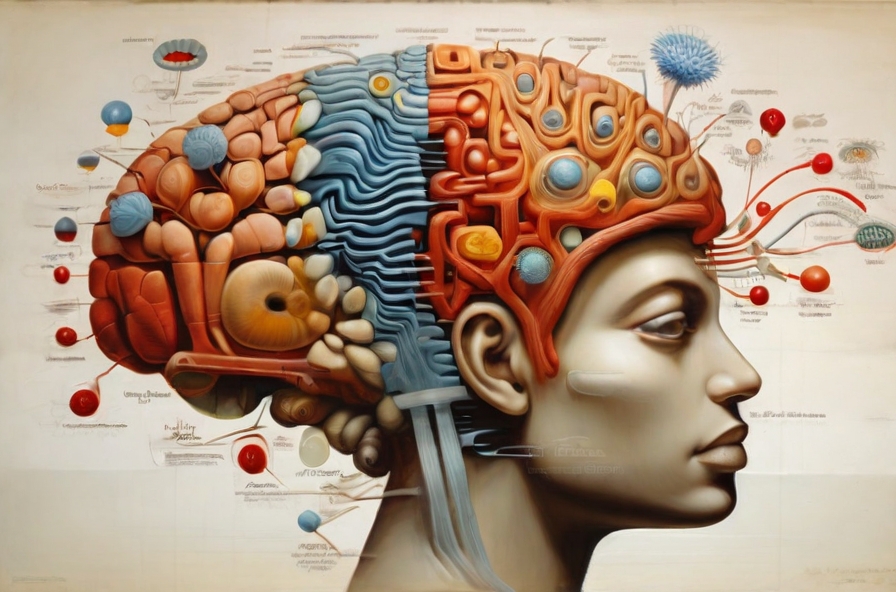
The sensory cortex holds paramount significance in the brain, serving as a vital hub for processing and comprehending sensory input from the external environment.
This pivotal component plays a fundamental role in shaping our perception of the world, enabling us to engage effectively with our surroundings.
Its intricate functions are essential for our ability to interpret and respond to the diverse stimuli encountered in our daily experiences.
What are the Functions of the Sensory Cortex?
The sensory cortex performs a multitude of functions related to processing diverse sensory information.
This includes input from our senses such as sight, smell, taste, hearing, and touch.
Its primary responsibility lies in deciphering and giving meaning to these varied sensory stimuli, thereby enabling us to comprehend and engage with our environment effectively.
- Read also: Prefrontal Cortex Exercises
- Read also: The Homunculus Unveiled: Exploring the Motor Cortex

How the Sensory Cortex Conducts Perception
The process of perception orchestrated by the sensory cortex unfolds through a sophisticated network of neural pathways and interconnections within the brain.
Upon receiving sensory input, the sensory cortex undertakes the intricate tasks of processing and interpreting this information.
This pivotal function enables us to comprehend our surroundings and formulate appropriate responses based on the interpreted stimuli.
How Your Brain Creates Your Sensory World
Your brain constructs the sensory world you experience through the intricate operations of the sensory cortex.
This crucial component is actively involved in processing and interpreting sensory inputs, playing a pivotal role in molding your perception of the world.
Furthermore, it significantly influences your behavior and responses based on the information it processes.
Different Parts of The Sensory Cortex and Their Functions
The sensory cortex is a vital part of the brain responsible for processing and interpreting sensory information.
It encompasses various areas associated with sensory function, including the visual, auditory, olfactory, gustatory, and somatosensory cortex.
Here are the different parts of the sensory cortex and their functions:
Visual cortex
Nestled in the occipital lobe, the visual cortex takes the lead in deciphering the visual landscape that surrounds us.
It diligently processes an array of visual cues, facilitating the recognition of shapes, colors, and motion.
This intricate system allows us to perceive and make sense of the rich tapestry of the visual world.
Auditory cortex
Residing in the temporal lobe, the auditory cortex assumes the crucial task of processing auditory information.
This encompasses the perception of sounds, speech, and various auditory stimuli.
Through its specialized functions, the auditory cortex contributes significantly to our ability to understand and engage with the auditory aspects of our environment.
Olfactory cortex
The primary olfactory cortex, located in the uncus of the piriform region within the temporal lobes, holds the key to processing olfactory information.
This region is uniquely tailored to handle the complexities of our sense of smell, making olfaction a distinctive and intricate aspect of our sensory experience.
Gustatory cortex
Known as the insular cortex, the gustatory cortex is the command center for processing gustatory sensations.
Situated in the insular lobe, it skillfully manages the intricate world of taste, allowing us to savor and distinguish various flavors.
Through its operations, the gustatory cortex significantly contributes to our overall sensory perception.
Somatosensory cortex
Positioned in the parietal lobe, the somatosensory cortex is dedicated to processing sensory information originating from the body.
This encompasses a wide spectrum, including touch, temperature, pain, and proprioception.
The somatosensory cortex is renowned for its unique “sensory homunculus map,” a representation that highlights different body parts based on their sensitivity and the volume of sensory information they convey.
This map is instrumental in orchestrating our conscious experience of the body’s sensations, forming a crucial aspect of our overall sensory perception.

- Read also: Exploring the Significance of the Motor Cortex
- Read also: Adrenal Cortex vs. Medulla Explained
Conclusion
The sensory cortex stands out as a remarkable and intricate segment of the human brain, playing a pivotal role in processing and making sense of sensory information.
Its responsibility extends to shaping our perception of the world and influencing our responses to the environment.
Exploring the functions of the sensory cortex offers valuable insights into the intricate workings of the human brain and its indispensable role in sensory processing.
FAQs
The sensory cortex is responsible for processing and interpreting various sensory inputs, including those related to vision, hearing, touch, and other somatosensory sensations.
The somatosensory cortex is located in the parietal lobe of the brain, behind the central sulcus.
The visual cortex is responsible for processing and interpreting visual information, including the recognition of shapes, colors, and motion.


